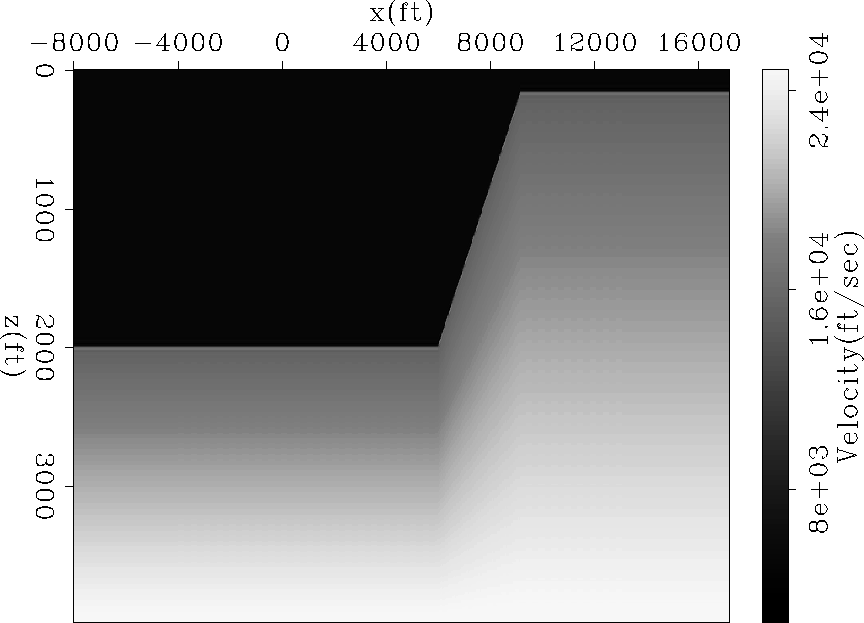 |
Figure 2 Velocity model used for modeling the synthetic data
![[*]](http://sepwww.stanford.edu/latex2html/cross_ref_motif.gif) . The velocity model is a combination of a flat layer and a layer having a dip of 30 degrees. The simulation is done with a free surface condition to model multiple events as well. I modeled about 225 shots with offsets ranging from -8000 ft to 8000 ft and shot spacing of 40 ft. Figure
. The velocity model is a combination of a flat layer and a layer having a dip of 30 degrees. The simulation is done with a free surface condition to model multiple events as well. I modeled about 225 shots with offsets ranging from -8000 ft to 8000 ft and shot spacing of 40 ft. Figure ![[*]](http://sepwww.stanford.edu/latex2html/cross_ref_motif.gif) is a sample shot record corresponding to a shot located at a surface location of 5000 ft. In the given shot record we have primaries and both first- and second-order multiples coming from the flat as well as the dipping reflector. There are also different types of first-order multiples having varied trajectories, including multiple bounces on the flat layer, multiple bounces on the dipping layer and one bounce each on the flat and dipping layers. Finally, there are second-order multiple events which have higher degrees of freedom in terms of possible ray combinations and have further complicated trajectories. Most of the multiple analysis carried out henceforth focuses on first order multiples.
is a sample shot record corresponding to a shot located at a surface location of 5000 ft. In the given shot record we have primaries and both first- and second-order multiples coming from the flat as well as the dipping reflector. There are also different types of first-order multiples having varied trajectories, including multiple bounces on the flat layer, multiple bounces on the dipping layer and one bounce each on the flat and dipping layers. Finally, there are second-order multiple events which have higher degrees of freedom in terms of possible ray combinations and have further complicated trajectories. Most of the multiple analysis carried out henceforth focuses on first order multiples.
 |